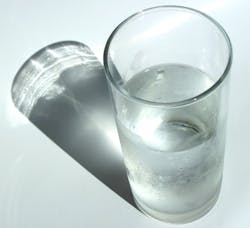A new economic benefits analysis of the impacts of increased funding for the Drinking Water and Clean Water State Revolving Funds (SRF), released by the Water Environment Federation (WEF) and the WateReuse Assn., has revealed that a requested $34.7 billion of federal SRF spending will generate $102.7 billion in total economic input and create more than 500,000 U.S. jobs.
WEF and WateReuse conducted the analysis at the request of the Senate Environment and Public Works Committee for an April 7 hearing that examined the federal role in water/wastewater infrastructure funding. The preliminary findings were included in the organizations’ joint testimony and have since been verified and officially entered into the committee’s official record. Using the IMPLAN economic model—which captures the effect of spending as it ripples through the economy—the organizations examined the estimated impacts (output, labor income, jobs and federal tax revenue) of SRF-funded projects in four example states.
The Senate Environment and Public Works Committee included a Sense of the Senate provision in S. 2848, The Water Resources Development Act of 2016, which cited the findings of the WEF/WateReuse analysis, and calls upon Congress to provide robust funding for the SRF programs. The committee passed S. 2848 on April 28 and the bill is now awaiting full Senate consideration.
Based on an assumption that the proposed $34.7 billion in allocations ($14.7 billion for drinking water and $20 billion for clean water) would be spent over a 10-year period (2017 to 2021), the final report results include:
- $34.7 billion in federal SRF spending results in $7.43 billion in federal tax revenues;
- When leveraged with the state SRF program funds, a $34.7 billion federal investment will result in $32.3 billion in federal tax revenue or 93 cents for every dollar spent;
- On average, 16.5 jobs are created for each million dollars of SRF funding, meaning that a $34.7 billion federal investment will result in 506,000 new jobs; and
- Every million dollars of SRF spending results in $2.95 million in U.S. economic input, meaning that a $34.7 billion federal investment will generate $102.7 billion in total economic input.
“SRFs are widely acknowledged as one of the most successful infrastructure funding programs, yet the resources needed to maintain and upgrade our systems remains out of sync with current investment levels,” said WEF Executive Director Eileen O’Neill. “This report shows that water and wastewater infrastructure is a sound and wise economic investment that also provides immeasurable returns for public health, the environment, and our future.”
“There’s little dispute that our nation’s infrastructure is badly in need of repair,” said WateReuse Assn. Executive Director Melissa Meeker. “With release of this report, it’s also abundantly clear that SRFs both contribute to a high quality of life for taxpayers and foster a robust economy.”
Click here to read the “WEF/WateReuse Analysis of National Economic, Job Creation, and Tax Revenue Benefits from Increased Funding to the Drinking Water and Clean Water State Revolving Funds.”
Source: WEF/WateReuse


